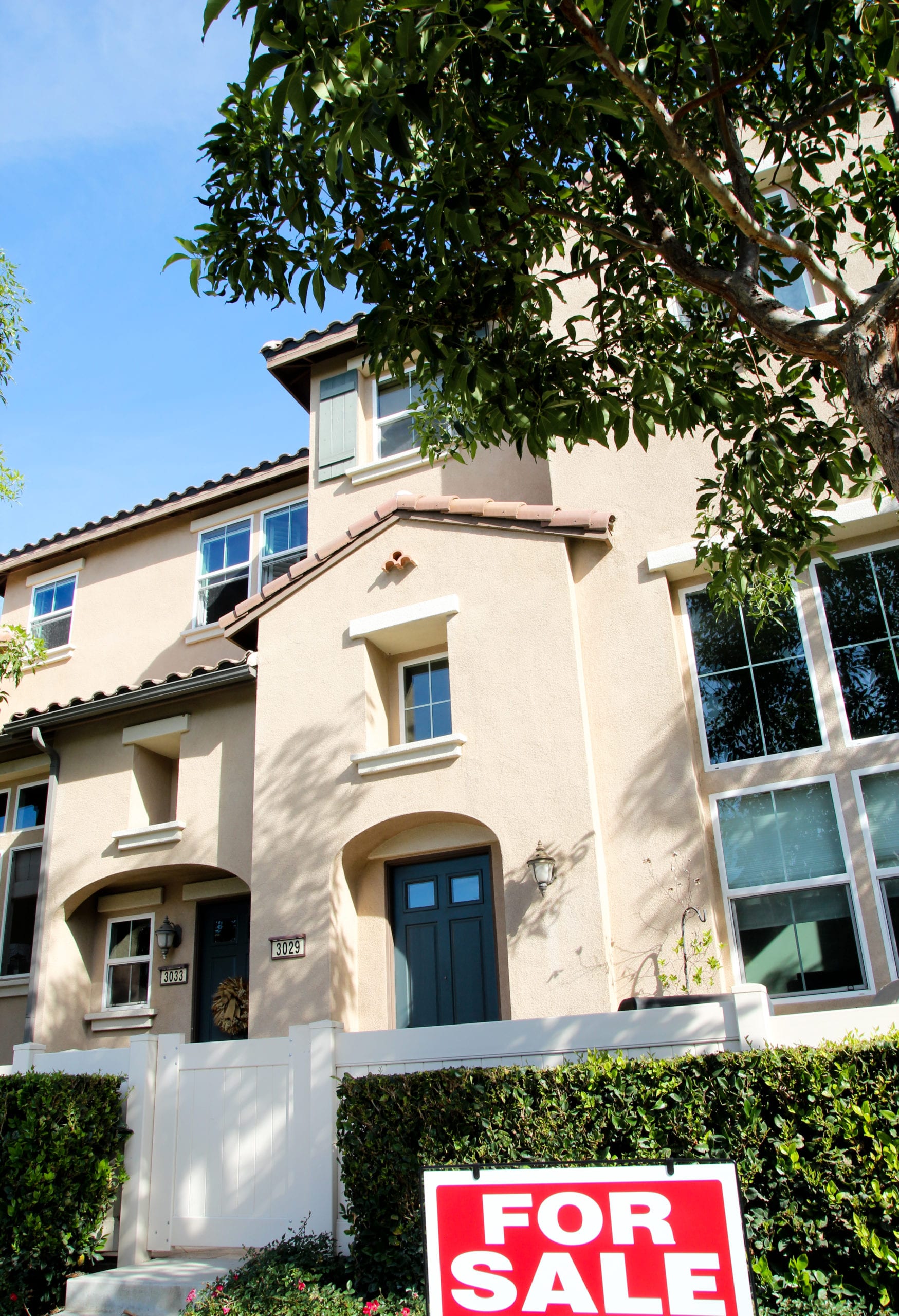A Down Payment Isn’t That Difficult with These Smart Tips

Whether you’re in the market for a new home or refinancing your mortgage payment on current home, we want to provide you with resources and support throughout your process to ensure you have the very best service.
Saving for your down payment can be challenging, especially if you’re already on a tight budget like most of us are. With a little discipline and some minor adjustments to your everyday household, these six tips can get you started in the right direction for homeownership and more savings!
How Much to Save?
Understanding the key costs and planning accordingly can help you reach your goal faster and with less stress. Let’s break down the main components of home purchasing costs and explore how you can prepare for them.
The Down Payment
The down payment is the most well-known expense when purchasing a home. It’s the initial amount you pay upfront, and it’s typically expressed as a percentage of the home’s purchase price. For example, if you’re buying a $300,000 home and plan to put down 10%, you’ll need $30,000.
The amount required for a down payment can vary depending on the type of home financing program you choose and the price of the home. Some mortgage programs allow for smaller amounts down, with a minimum down payment as low as 3% or 5%, while a conventional loan might require 20% or more. Saving for your down payment is crucial because it reduces the amount you need to finance and can make your monthly mortgage payment more manageable.
Keep in mind that a lower down payment also may mean that you need to add private mortgage insurance, whereas a larger down payment will eliminate that expense.
Also remember that help may be available, especially programs geared toward first time homebuyers. Ask your financier about down payment assistance programs that may reduce the amount you need to save. Many home buyers forgo assistance that’s available because they simply don’t ask.
Closing Costs
In addition to the down payment, you’ll need to budget for closing costs. These are fees associated with the transfer of ownership and the administrative process of buying a home. Common closing costs include:
Title Services: Fees for the title search and title insurance.
Property Taxes: A portion of the annual property taxes may need to be prepaid at closing.
Homeowner’s Insurance: This is typically required upfront to protect your new home.
Escrow Fees: Costs related to setting up an escrow account for taxes and insurance.
Closing costs usually range from 2% to 5% of the home’s purchase price. For a $300,000 home, this could mean an additional $6,000 to $15,000. Be sure to account for these expenses in your savings plan.
Moving Expenses
Don’t forget to factor in the cost of moving into your new home. Depending on how far you’re moving and how much you’re transporting, moving expenses can vary widely. Common costs include:
Hiring professional movers
Renting a moving truck
Packing supplies
Utility connection fees for your new home
To estimate your moving expenses, get quotes from moving companies or calculate the costs if you’re planning a DIY move.
Home Maintenance and Repairs
Once you’ve moved into your new home, you’ll want to be prepared for ongoing maintenance and unexpected repairs. Experts recommend setting aside 1% to 3% of your home’s value annually for maintenance. For a $300,000 home, this means saving $3,000 to $9,000 each year.
Creating a separate emergency fund for home-related expenses can provide peace of mind and help you address issues like a leaky roof or a broken HVAC system without financial strain.
Additional Costs to Consider
Furniture and Appliances: If you’re upgrading to a larger home or starting fresh, you may need to purchase furniture or appliances. Budget for these items in advance to avoid overspending once you move in.
Homeowners Association (HOA) Fees: If your new home is in a community with an HOA, you’ll need to pay monthly or annual dues. These fees cover shared amenities and maintenance of common areas.
Property Taxes and Insurance: Beyond the initial costs at closing, property taxes and homeowner’s insurance will be ongoing expenses. Research the tax rates in the area where you plan to buy and get quotes for insurance to estimate these costs.
How Much Should You Save?
To calculate how much you need to save, add up the following:
Your target down payment amount
Estimated closing costs (2% to 5% of the purchase price)
Moving expenses
An emergency fund for maintenance and repairs
Additional costs like furniture, appliances, and HOA fees (if applicable)
For example, if you’re purchasing a $300,000 home with a 10% down payment, your savings goal might look like this:
Down payment: $30,000
Closing costs: $9,000 (3%)
Moving expenses: $2,000
Emergency fund: $5,000
Furniture and appliances: $5,000
Total Savings Goal: $51,000
Six Tips for Saving
Now that you have an idea of what your target goal is, you can focus on ways to increase your savings. Here are some ideas to get on track toward saving enough money for your home:
1. Organize and Track All Your Expenses
The first step to saving is understanding where your money goes. Each month, track every single item or service you purchase over 30 days. This includes small, seemingly insignificant expenses like snacks, subscriptions, or impulse buys. Use tools like budgeting apps or a simple spreadsheet to categorize your spending.
Review your credit card and bank statements to identify patterns and areas where you can cut back. Are there subscriptions you no longer use? Could you switch to a more affordable cell phone plan? By knowing exactly where your money is going, you’ll be better equipped to make informed decisions and redirect those funds toward your down payment fund.
2. Set Personal Goals for Saving
Once you’ve organized your expenses, it’s time to set goals for saving money. Determine your necessary expenses — such as rent, utilities, and groceries — and identify areas where you can avoid unnecessary purchases and cut back in your monthly budget. Use this information to create a monthly and yearly savings plan.
Set specific, measurable goals for your savings. For example, if you want to save $10,000 for a down payment in two years, calculate how much you need to set aside each month to reach that target. Break it down further into weekly goals to make it more manageable.
Remember, saving doesn’t mean eliminating all fun from your life and your personal finance. Instead, plan and budget for entertainment and excursions. By capping these expenses, you can enjoy life while staying on track with your savings goals.
3. Plan for Meal Prep and Coffee
As odd as it sounds, we spend hundreds and even thousands of dollars on fast food and restaurants without realizing it. Dinner out with a family can sometimes exceed the weekly grocery budget, and over weeks, that can really add up. By meal prepping and brewing coffee at home, you can potentially save hundreds of dollars each month.
Start by planning out your weekly menu. Allocate time to discuss meal options with your household and make it a collaborative effort. This not only helps you stick to your budget but also encourages healthier eating habits. Preparing meals in bulk and freezing portions can save time and ensure you’re less tempted to opt for expensive takeout on busy days.
Similarly, brewing coffee at home can save you a significant amount that you can add to your down payment savings. If you’re used to buying a daily coffee from your favorite cafe, consider investing in a good coffee maker. The upfront cost will pay for itself in just a few weeks. By cutting down on dining out and coffee runs, you’ll see your savings grow quickly.
4. Open a Down Payment Savings Account
With your newfound savings, it’s important to keep them separate from your regular checking account. Open a dedicated savings account specifically for your down payment. This will help you avoid the temptation to dip into those funds for everyday expenses.
Make it a habit to “pay yourself first” each month. As soon as you receive your paycheck, transfer a predetermined amount of cash into your savings account. Many banks offer automatic transfer options, making it easier to stay consistent. Over time, this account will grow into a substantial nest egg for your down payment.
5. Stretch Your Dollars
Small lifestyle changes can lead to significant savings. For example, quitting smoking not only improves your health but also frees up hundreds of dollars each month. Similarly, drinking tap water instead of buying bottled water and carpooling or using public transportation can reduce your expenses.
Evaluate other areas where you can make smarter choices. Consider buying second-hand items, such as furniture or clothing, instead of new ones, and forgoing your gym membership temporarily in favor of walking outside instead. Look for sales, use coupons, and take advantage of cashback offers. These small adjustments can add up over time and help you save more for your home.
6. Look for Extra Sources of Income
Saving for a home can feel overwhelming, especially if your current income leaves little room for extra savings. Finding additional ways to earn extra income on the side can make a big difference in reaching your down payment goal faster. Here are some ideas to consider:
Freelancing or Consulting
If you have skills in writing, graphic design, programming, or marketing, consider offering your services on freelance platforms. Many businesses and individuals are looking for part-time help, and this can be a flexible way to boost your income.
Selling Unused Items
Take a look around your home for items you no longer use or need. Selling clothes, electronics, furniture, or collectibles online through platforms like eBay, Facebook Marketplace, or Poshmark can help you declutter and earn extra cash.
Gig Economy Jobs
Consider signing up for gig economy platforms such as ride-sharing, food delivery, or grocery shopping services. These jobs often allow you to work on your own schedule and can provide a steady source of additional income.
Teaching or Tutoring
If you excel in a particular subject or have a talent like playing an instrument, consider teaching or tutoring. You can offer your services locally or online.
Part-Time Work
Taking on a part-time job in the evenings or weekends can provide a consistent income boost. Look for opportunities in retail, hospitality, or seasonal work that fit your schedule.
By dedicating time to one or more of these side income opportunities, you can accelerate your savings and get closer to your goal of homeownership.
Additional Tips for Success
Create a Vision Board
Visualizing your goals can be a powerful motivator. Create a vision board with pictures of your dream home, the neighborhood you want to live in, and other elements that inspire you. Place it somewhere visible to remind yourself of what you’re working toward.
Involve Your Family
If you’re saving as a household, involve everyone in the process. Discuss your goals and brainstorm ways to cut costs together. When everyone is on the same page, it’s easier to stay committed and make progress.
Celebrate Milestones
Saving for a down payment is a long-term goal, so it’s important to celebrate small victories along the way. When you reach a milestone, such as saving your first $1,000, reward yourself with a small, budget-friendly treat. This will keep you motivated and focused on your ultimate goal.
By making adjustments to your daily habits and staying disciplined, you can ultimately save thousands and achieve your dream of buying a house. Remember, every dollar saved brings you one step closer to your goal. We’re here to support you every step of the way. Happy saving!
Ready to Get Started?
Buying a home is one of the most important decisions you will make. The team at Guidance Residential is here for you, from the first step of pre-qualification or pre-approval, on through to finding the right real estate professional for you and your family — or refinancing a home you already own. We invite you to explore the home buying process with Guidance Residential today. You can also instantly calculate an estimate specific to your personal situation with our finance calculators online.
Guidance Residential remains the #1 U.S. Islamic home financing provider, with more than 40,000 families assisted over more than 20 years. Learn more about our co-ownership model of Islamic home financing, and get started on your home finance journey today.
Your Guidance Residential Account Executive is here to help with any questions. Looking to refinance or purchase? Have a friend or family member who is looking for a home? Call 1.866.Guidance, or start an application today.
Originally published August 2018, updated December 2024.




